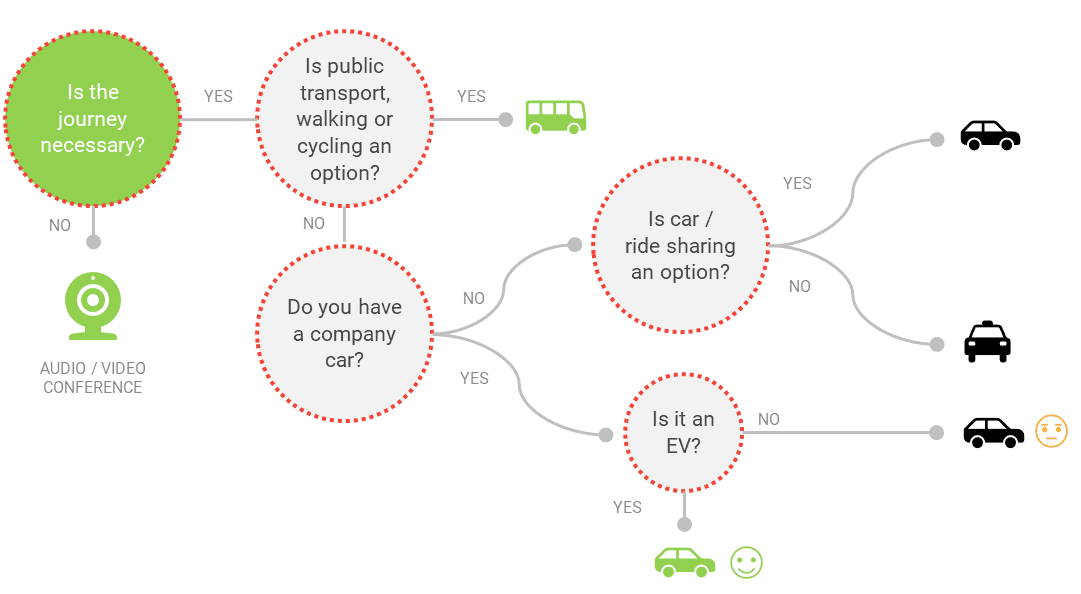Fleet mobility is changing the face of fleet management.
More and more companies are now looking at how their staff make business journeys. Companies who focus on company cars and vans need to now consider how fleet mobility is the new default position. This can mean embracing solutions for car sharing, car clubs, bike schemes, public transport, taxis, car hire and planes and even hotels and car parking.
There are many questions surrounding fleet mobility.
Q. What is the most efficient way for employees to travel?
Q. Can your current leasing supplier provide truly transparent strategy advice?
Q. What is the impact on recruitment and retention?
Q. Is a switch really needed in your company?
Are you ready to switch?

The 10 steps to a successful fleet mobility policy.
1. Truly understand your business objectives
What does your company want to achieve? How much is it looking to reduce travel costs and carbon emissions by and over what time period? Your company ethos will certainly come into play. First class travel may not be appropriate.
2. Understand your employee requirements
Launch a mobility survey to help analyse how employees travel to work. Uncover interest in a new policy that initially may not prove popular.
Consider the practical facilities you will need to introduce if you were to introduce a cycle scheme for example. Secure cycle racks, showers and lockers will clearly be a requirement.
3. Consider office location v access to public transport
If your office is located in a city, a car sharing scheme may not work. Employees may find public transport is more convenient. However, a location outside of a city may have more car park space, allowing a car club to operate more successfully.
4. Question the need to travel
Uncovering the reason for travel and how employees travel is key to cost reduction. Many companies have video conference facilities but are often under utilised. Who can use these facilities? Do they sit unused in the boardroom for 95% of the time? What if anyone could use the technology?
5. Decide how employees should book travel
Do your employees book their own travel? Not a major focus of fleet strategy, but you should also consider a dedicated booking system that all employees have to use. This will help you understand at company or group level how your employees travel. This data will clearly highlight any exceptions that can then be acted upon.
Booking systems will also allow you to build in preferred suppliers and generate considerable discounting over individual use.
Suggested reading: Transparency in business
6. Determine travel policy restrictions
Advance booking can bring savings but it is balancing act. Your policy should stipulate minimum booking periods clearly exceptions to the rule have to be accounted for. Last minute meetings always happen, but as the culture changes, planning ahead becomes standard.
7. Communicate the fleet policy
Effective communication is essential throughout business, but it is often overlooked and sent out without too much thought. Travel is an emotive topic.
It is essential that employees know what options are available to them and the benefits of doing so.
Regular internal campaigns can help educate and inform employees about new forms of transport technology. For example, electric bikes are becoming increasingly popular in congested cities across Europe.
8. Consider offering incentives and dis-incentives
Sometimes, you need to provide incentives for people to make change in their habits. Travel credits can be awarded when selecting the best travel method. These can be used for personal travel at the weekend for example.
Alternatively, a dis-incentive of lower mileage rate reimbursement can be adopted when employees use their own car for business travel. Reducing grey-fleet use has other benefits.
Companies need to be clear with employees as to the benefits for introducing fleet mobility changes.
9. Don’t forget duty of care
Any policy needs some flex and a sensible approach. Hours of travel still need to be considered and total meeting costs including hotel should considered. For example, it may be better to exceed the hotel allowance if that saves on taxi cost.
10. Get feedback and analyse data
Again, an often overlooked aspect of any new project. Feedback is essential to understand the adoption rates of new travel options. Data is then available to challenge user choices outside what it expected. Analysis of data is essential to ensure that any fleet mobility plan is sustainable and accepted. Only then will driver culture start to positively change.
Get in touch and we’ll guide you through some case studies and demonstrate how our strategy can work for you.




